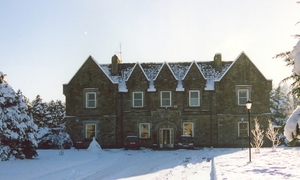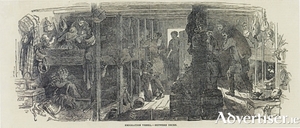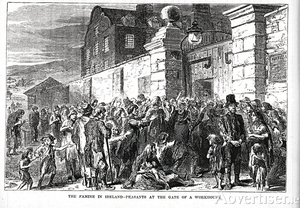Search Results for 'Workhouse'
19 results found.
Former Athlone Workhouse to host art and heritage workshop in May

Artist Mimi Seery and historian Gearoid O’Brien warmly have extended an invitation to the local community to participate in an Art and Heritage workshop at Abbey Road Studios, Athlone, on May 3.
The Battle for Ballinrobe Workhouse 1883-1888

Patrick J. Farragher was a dark-complexioned individual but was otherwise of regular features. His heavy moustache gave him a military appearance. Up to September 1879, Farragher held the lease to a farm on the Mannin Estate in Aghamore.
The Galway Workhouse

The first formal meeting of the Board of Guardians of the Galway Workhouse took place in the Town Hall on July 3, 1839, and the building opened on March 2, 1842, one of many such workhouses built around the country. On March 16, the first pauper died from old age and destitution. The numbers of inmates gradually increased to 313 by May 1845, after which the Famine made a huge impact on the project. It was originally designed for 800 destitute persons but this quickly increased to 1,000. Included in the complex was an infirmary for sick paupers but this rapidly became the hospital for the city’s poor.
Mayo Library puts workhouse records online

The workhouse has been described as “the most feared and hated institution ever established in Ireland" and the story of these institutions has now been made available online by Mayo County Library.
Almost 18,000 visitors this year to Portumna Workhouse very encouraging for 2019, says Cannon
An East Galway TD has welcomed the fact that almost 18,000 people visited the Irish Workhouse Centre in 2018.
Last chance to win the opportunity to go ‘glamping’

If you have not experienced it yet, ‘glamping’ is a great way to go camping. There's no canvas, no rain worries, no hassle - and no hard work!
Getting rid of the troublesome women

One of the remedies in dealing with overcrowding, and rebellious behaviour from frustrated and angry women in the workhouses during the famine years, was assisted emigration. This was done on a massive scale. Between 1848 and 1850, 4,175 women were sent direct from the workhouse system to Australia. This was in addition to the thousands already sent away assisted by landlords and other schemes to clear the land of unproductive tenants. The only cost to the individual Poor Law unions was for new clothes, and travel expenses to Plymouth, from where the girls embarked to the colony.
Free training scheme for construction workers in restoration of stone buildings
The Traditional Building Skills Training Scheme (TBSTS) is a pilot programme being run by the Department of Arts, Heritage and the Gaeltacht in conjunction with four local authorities.



